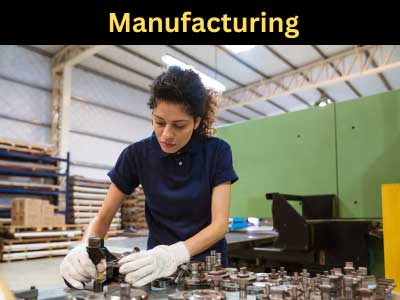Which Is An Example Of Additive Manufacturing?
Key Takeaway
An example of additive manufacturing is 3D printing. This process creates objects layer by layer from digital models. One common use is in the medical field, where 3D printing produces customized implants and prosthetics. These items are tailored to individual patients, improving comfort and functionality.
3D printing is also popular in aerospace for creating lightweight, strong components. Its ability to produce complex geometries makes it ideal for parts that are difficult to manufacture using traditional methods. By using 3D printing, industries can reduce waste, lower costs, and speed up production times, demonstrating the versatile applications of additive manufacturing.
3D Printing
3D printing is the most prominent example of additive manufacturing. This technology involves creating three-dimensional objects from a digital file by layering materials until the final shape is achieved. Unlike traditional manufacturing, which often involves subtracting material from a larger block, 3D printing adds material only where needed. This method is not only efficient but also highly versatile.
How It Works:
The process begins with a digital 3D model created using computer-aided design (CAD) software. This model is then sliced into thin layers by the 3D printer’s software. The printer reads these layers and deposits the material, usually plastic, metal, or resin, layer by layer until the object is complete. Different types of 3D printers use various methods to deposit material, such as melting plastic filament, curing resin with UV light, or sintering metal powder with a laser.

Benefits of 3D Printing
The benefits of 3D printing are numerous and span across various aspects of manufacturing and design.
Customization and Flexibility:
One of the most significant advantages of 3D printing is its ability to produce customized items with ease. Whether it’s a one-off prototype or a tailored medical implant, 3D printing can handle it. This flexibility makes it an invaluable tool in industries where bespoke solutions are essential.
Cost-Effectiveness:
For small production runs or prototyping, 3D printing can be far more cost-effective than traditional manufacturing methods. It eliminates the need for expensive molds and reduces material waste, as only the necessary amount of material is used.
Speed:
3D printing accelerates the design-to-production timeline. Prototypes can be designed, printed, and tested within days, rather than weeks or months. This rapid turnaround is crucial for industries that rely on quick iteration and innovation.
Complex Geometries:
Traditional manufacturing methods often struggle with complex geometries and intricate designs. 3D printing, however, excels in this area. It can create structures that would be impossible or very costly to produce with other methods.
Applications in Various Industries
The versatility of 3D printing means it has applications across a wide range of industries.
Healthcare:
In the medical field, 3D printing is used to create custom prosthetics, dental implants, and even bioprinted tissues and organs. This technology allows for patient-specific solutions that improve outcomes and reduce costs.
Aerospace:
The aerospace industry benefits from 3D printing’s ability to produce lightweight, strong components. Parts for aircraft and spacecraft can be manufactured with complex geometries that enhance performance and reduce weight.
Automotive:
In the automotive industry, 3D printing is used for prototyping new components, producing custom parts, and even manufacturing end-use parts for specialized vehicles. This flexibility allows for rapid innovation and customization.
Fashion and Art:
3D printing is also making waves in the fashion and art industries. Designers are using it to create intricate jewelry, unique clothing items, and complex sculptures that would be difficult or impossible to produce by hand.
Case Studies
Medical Prosthetics:
A notable example is the use of 3D printing to create custom prosthetic limbs. Traditional prosthetics can be expensive and may not fit perfectly, but 3D printing allows for the production of affordable, tailor-made prosthetics that improve the wearer’s quality of life.
Airbus and 3D Printed Parts:
Airbus has integrated 3D printing into its manufacturing process to produce parts for its aircraft. The company has successfully used this technology to create complex components that are lighter and stronger than traditionally manufactured parts, improving fuel efficiency and performance.
Nike’s 3D Printed Shoes:
Nike has used 3D printing to prototype and produce custom shoe components. This allows for rapid iteration and testing of new designs, helping the company stay ahead in the competitive footwear market.
Future Trends
Mass Customization:
One of the most exciting future trends in 3D printing is mass customization. As the technology advances, it will become feasible to produce customized products on a large scale, combining the benefits of mass production with the flexibility of bespoke manufacturing.
Bioprinting:
Bioprinting, which involves printing with cells and biomaterials, holds the promise of creating functional tissues and organs. This could revolutionize medicine by providing solutions for organ transplants and regenerative treatments.
Sustainability:
As industries strive for sustainability, 3D printing offers a way to reduce waste and use resources more efficiently. The ability to produce items on demand reduces the need for large inventories and minimizes excess production.
Integration with Other Technologies:
The future will likely see 3D printing integrated with other advanced technologies, such as artificial intelligence and robotics. This integration will enable even more sophisticated manufacturing processes and automation, further enhancing efficiency and innovation.
Conclusion
Understanding the various examples and applications of additive manufacturing, particularly 3D printing, is essential for any engineer entering the industry. This technology is not only changing how products are designed and manufactured but also opening up new possibilities for innovation across multiple fields. By leveraging the benefits of 3D printing, such as customization, cost-effectiveness, speed, and the ability to create complex geometries, industries can stay ahead in a competitive market. The future of 3D printing holds even more promise, with advancements in mass customization, bioprinting, sustainability, and technological integration on the horizon. Embracing these developments will be crucial for driving progress and achieving success in the industrial sector.
